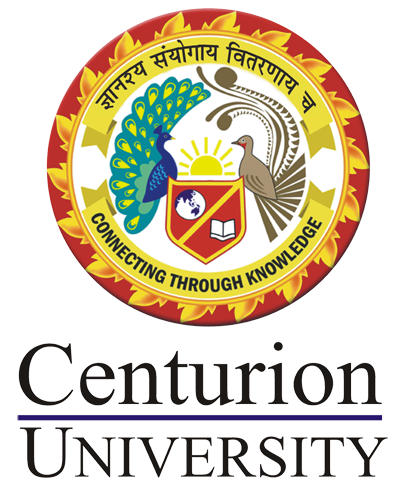Agricultural Economics and Trade
Course Attendees
Still no participant
Course Reviews
Still no reviews
Code(Credit) : ASEC 1101 (3-0-0)
Course Objectives
- Help students to contribute to better decision making by farmers, or by agencies servicing agriculture.
- Help students to understand why farmers respond to policies and economic opportunities in the ways they do.
- To acquaint the learner with introductory Agricultural Economics, development of agriculture in India, use of yield increasing inputs, marketing, trade and prices.
Learning Outcomes
- Improved decision making about things like agricultural production methods, agricultural input levels and resource conservation etc.
- Students should be able to communicate effectively, economic concepts, decision-making, and agricultural and trade concepts.
- Students should have the skills to fit into a business, agency, or academic environment and use economic concepts to quantify and analyse issues related to their employer’s issues.
Course Syllabus
- Economics: Meaning, scope and subject matter, definitions, activities, approaches to economic analysis; micro and macro economics, positive and normative analysis. Nature of economic theory; rationality assumption, concept of equilibrium, economic laws as generalization of human behavior. Basic concepts: Goods and services, desire, want, demand, utility, cost and price, wealth, capital, income and welfare. Agricultural economics: meaning, definition, characteristics of agriculture, importance and its role in economic development. Agricultural planning and development in the country.
- Demand: Meaning, law of demand, demand schedule and demand curve, determinants, utility theory; law of diminishing marginal utility, equi-marginal utility principle. Consumer’s equilibrium and derivation of demand curve, concept of consumer surplus. Elasticity of demand: concept and measurement of price elasticity, income elasticity and cross elasticity.
- Production:Process, creation of utility, factors of production, input output relationship. Laws of returns: Law of variable proportions and law of returns to scale.
- Cost: Cost concepts, short run and long run cost curves.
- Supply:Meaning, law of supply, supply schedule, supply curve, determinants of supply, elasticity of supply.
- Market structure: Meaning and types of market, basic features of perfectly competitive and imperfect markets. Price determination under perfect competition; short run and long run equilibrium of firm and industry, shut down and break even points.
- Distribution theory: Meaning, factor market and pricing of factors of production. Concepts of rent, wage, interest and profit.
- National income:Meaning and importance, circular flow, concepts of national income accounting and approaches to measurement, difficulties in measurement.
- Population: Importance, Malthusian and Optimum population theories, natural and socio-economic determinants, current policies and programmes on population control.
- Money:Barter system of exchange and its problems, evolution, meaning and functions of money, classification of money, money supply, general price index, inflation and deflation.
- Banking:Role in modern economy, types of banks, functions of commercial and central bank, credit creation policy.
- Public finance:Meaning, micro v/s macro finance, need for agricultural finance, public revenue and public expenditure.
- Tax:Meaning - Classification – Direct and indirect taxes, methods of taxation - Proportional, progressive, regressive and digressive taxation, agricultural taxation - VAT and GST
- Economic systems: Concepts of economy and its functions, important features of capitalistic.
- Agricultural prices and policy: Meaning and functions of price; administered prices; need for agricultural price policy; Trade: Concept of International Trade and its need, theories of absolute and comparative advantage. Present status and prospects of international trade in agri-commodities; GATT and WTO; Agreement on Agriculture (AoA) and its implications on Indian agriculture; IPR.
References
1. Dewett,K.K. and Varma, J.D.2003.Elementory Economic Theory. S.Chand and Co, New Delhi
2. Dewett,K.K. and Chand,A.2009. Modern Economic Theory. S.Chand and Co, New Delhi
3. Paul A. Samuelson and Nordhus.2010. Economics. 19th Edition, Tata-Mac Graw Hill Education, New Delhi
4. Jhingan,M.L. 1990. Advanced Economic Theory. Vikas Publishing House, New Delhi
5. Koutsoyiannis.2015. Modern Microeconomics. Tata-Mac Graw Hill Publishers, New Delhi
6. The Economy 2016, www.core.econ.org.
7. www.wto.org
Session Plan
Session 1
Introduction: Economics, Scope of study of economics as a science, Methods of economic investigation, Basic concepts,Economic activity and concept of economy and its functions, basic economic problems, three main economic actors-households, firms, governments as basic decision making units.
https://youtu.be/2Nq8LN3XGQA
Session 2
Agricultural Economics - Meaning, Nature, Characteristics,definitions, its importance as a subject to science students
<a
https://youtu.be/NXBopuAyO0w
Agricultural Economics
Session 3
Demand - Meaning, the law of demand, demand schedule and demand curve characteristics, determinants, types of demand,Income demand, price demand, cross demand - Product demand, firm demand, market demand.
https://youtu.be/outYDTq-jPc
Demand & Utility Analysis
Session 4
Market dynamics due to changes/ shifts in demand and prices,Contraction and extension, increase and decrease in demand.
https://youtu.be/_8T8glylBFc
Demand & Supply Case Study - Health Care Sector
Session 5
Law of diminishing marginal utility:Statement, assumptions of law, explanation, limitations of the law - Importance and applications, Law of Equi-marginal utility:Meaning, assumptions, explanation of the law - Practical importance and applications, limitations
Session 6
Consumer’s surplus:Meaning, assumptions, explanation with examples, difficulties in measuring, consumer’s surplus - Importance and applications , Indifference curve analysis, Budget line and its properties
https://youtu.be/PXzfJtCr9bA?list=PLozHEW87IH9nctOG-uh7GC47u9pfJqRvB
Consumer Surplus & Indifference curves
Session 7
The elasticity of demand – Meaning, elastic and inelastic demand, measurement of elasticity of demand,Perfectly elastic, perfectly inelastic, relatively elastic, relatively inelastic, unitary elastic demand - Factors affecting elasticity of demand, practical importance of elasticity of demand
https://youtu.be/HHcblIxiAAk
Elasticity of Demand
Session 8
Types of elasticity of demand - Price elasticity, income elasticity and cross elasticity of demand
https://youtu.be/lrGiZ7aTlQo
Case study - Airlines Industry
Types of Elasticity
Session 9
Production - Meaning of production process, creation of utility, factors of production and input-output relationship and production function – Meaning
https://youtu.be/rnEFtyMzjOo
Production Function
Session 10
Laws of returns - Increasing, decreasing and constant laws of returns - Meaning and explanation with examples
https://youtu.be/VgF1agw8RmE
Production function (Laws of Returns)
Session 11
Cost - Seven production costs - Meaning and formulas, cost and output relationships - Short-run and long-run cost curves
https://youtu.be/qYKJdooEnwU
Cost Function
Session 12
Supply – Meaning, definition, law of supply, supply schedule, supply curve and properties, determinants of supply
Elasticity of supply and its measurement
https://youtu.be/lyUQZZ75DpE
Supply and Elasticity of Supply
Session 13
Markets and market structure – Meaning, classification of markets based on market structure, Their Characteristics
https://youtu.be/Z9e_7j9WzA0
Market Structure (Perfect & Imperfect competition)
Session 14
Characteristics of monopolistic competition, monopoly, duoploy, oligopoly, monopsony, duopsony and oligopsony with examples.
https://youtu.be/i605cdQmrhI
Oligopoly Case Study on Cartels
Market Structure
Session 15
Price determination under perfect competition,Equilibrium analysis - Numerical and graphical explanation.
https://youtu.be/OLaqDnx5tws
Price determination under perfect competition
Session 16
Distribution theory & Wages: Meaning, factor market - Concepts of rent - Meaning, types of rent, Meaning, nominal and real wages, working population in India
https://youtu.be/BzYBad7e-Es
Distribution & Wages
Session 17
Public Finance: Meaning, role and importance of public finance/Public policy - Functions of the government
https://youtu.be/Iwv0aWXKujk
Public Finance
Session 18
Public Revenue (Taxes) Direct and indirect taxes, methods of taxation - Proportional, progressive, regressive and digressive taxation, agricultural taxation
https://youtu.be/1H5uU_6Ax_4
Public Revenue (Taxes)
Session 19
Public expenditure: Meaning, need for public expenditure - Principles of public expenditure – Budget – Meaning - Balanced budget and deficit budget
https://youtu.be/JxslgH7R_f0
Public expenditure
Session 20
National income accounting system: Meaning and importance, circular flow in the economy, Concepts of national income accounting
https://youtu.be/mjJmo5mN5yA?list=PL-uRhZ_p-BM52EbMG1NR1ZfG9tEvcxE4u
https://ideas.ted.com/why-we-shouldnt-judge-a-country-by-its-gdp/
National income accounting system
Session 21
Approaches to measurement of national income – Product method, income method, expenditure method and value-added method, difficulties in measurement
https://www.ted.com/talks/niti_bhan_the_hidden_opportunities_of_the_informal_economy#t-17784
National income accounting system
Session 22
Importance of population in the economy - Malthusian theory, escaping from the Malthusian stagnation - Innovations, technological transition and economic growth
https://youtu.be/4V09jl5WIvw
National income and Population
Session 23
Money - Meaning, the evolution of money, functions of money, the money market - Types of demand and supply of money in the economy.Credit - Meaning of credit, borrowing and lending, investments and their role in the modern economy - Credit controls and credit policy.
https://youtu.be/fTTGALaRZoc
Money & Credit
Session 24
Role of banking in the modern economy, functions of the central bank and commercial banks, monetary policy and its instruments
Role of banking in the modern economy
Case Study - The-Yes-Bank-Crisis
Session 25
Inflation – Meaning, definition, deflation - Meaning, causes of inflation - Demand-pull and cost-push inflation, Types of inflation
https://youtu.be/gi7jx5IJtik
https://www.tutor2u.net/economics/reference/inflation-causes-of-inflation
Session 26
Measurement of inflation and other causes of inflation
https://youtu.be/gi7jx5IJtik
Money & Credit
Session 27
Economic system - Meaning, the importance of the study of the economy in systems approach - Types of economic systems, Capitalism
https://youtu.be/Fdfru9NHGvE
Economic Systems & Capitalism
Session 28
Economic planning - Meaning, the importance of planning in the management of resources and institutions in the economy, elements of economic planning, a brief history of the planning system in India
https://youtu.be/SkgENsEHyQc
Session 29
Agricultural prices and policy - Meaning and functions of price; administered prices; need for agricultural price policy
https://youtu.be/2rWnmyTZQgs
Agriultural Price & Policy
Case Studies
Case Studies
Our Main Teachers

Kalee Prasanna Pattanayak holds a masters degree in finance from NIILM centre for management studies. His professional career spans over 10 years into industry and academics. He has more than six years of experience in teaching, training and research. His teaching interests include areas like Economics, Agribusiness and Business Environment. Along with facilitating courses, he […]

